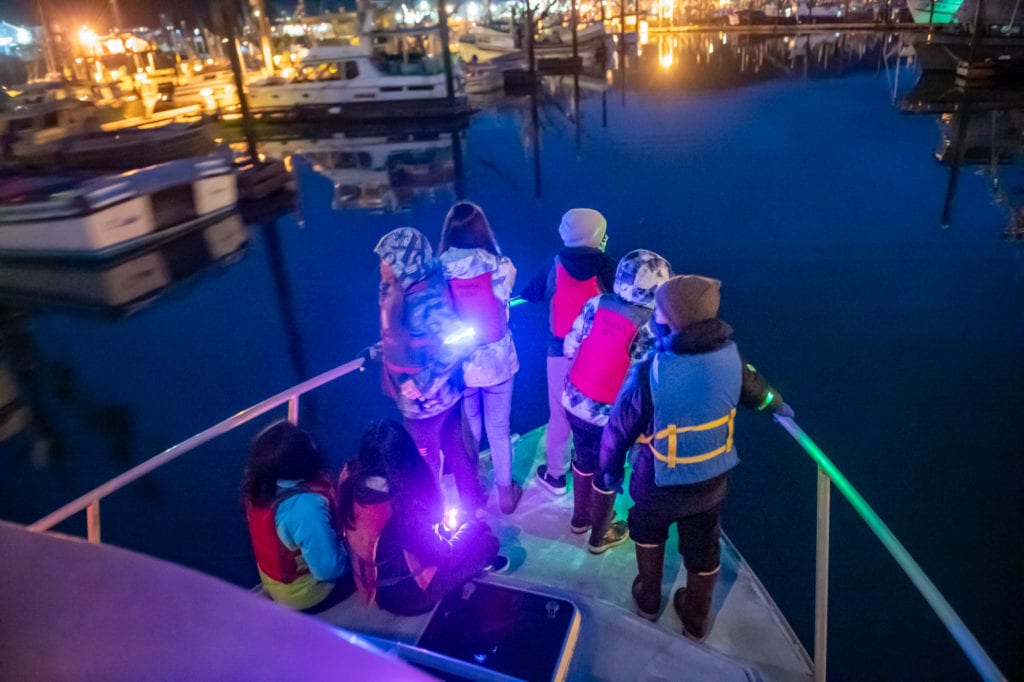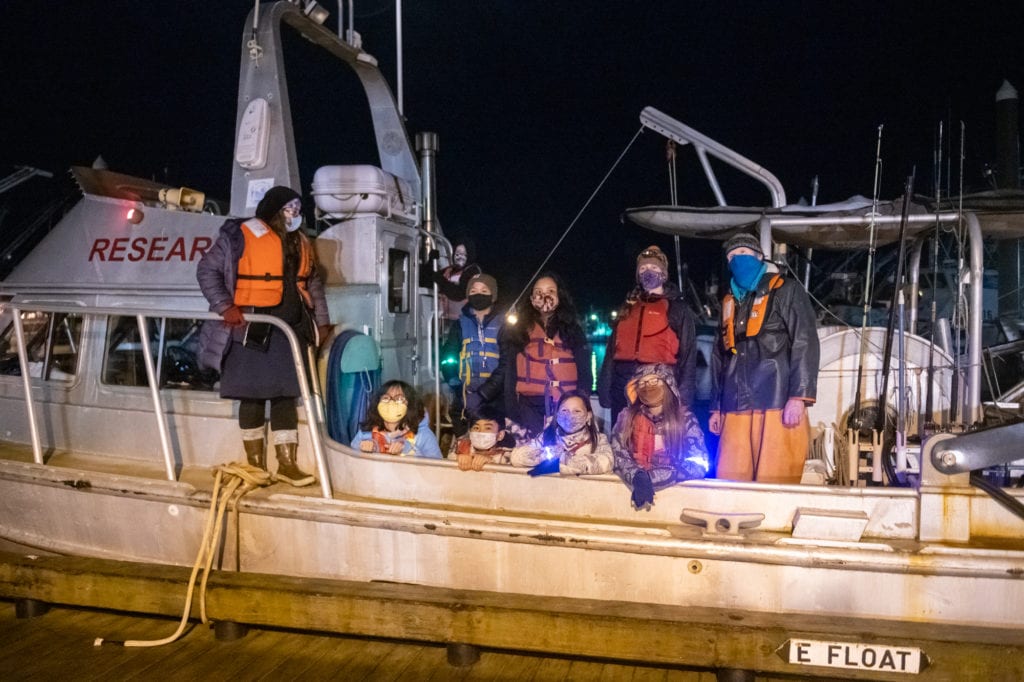
Mt. Eccles Elementary School Students observed light-emitting organisms Oct. 27-28 in Orca Inlet. The after-dark field excursions were led by Prince William Sound Science Center oceanographer Rob Campbell aboard the research vessel M/V New Wave.
“It wasn’t too much of a problem — they all seemed to get that they need to hang on to the boat,” Campbell laughed.
Campbell and his team pulled up nets containing bioluminescent zooplankton, microscopic animals that live in water. Glowing, 3-inch jellyfish were also visible when disturbed by the New Wave’s passage.
Some animals may emit light to ward off predators, or to attract a predator’s predator, Campbell said. The anglerfish is well known for using a bioluminescent spine to lure in prey. However, scientists are still developing their understanding of the purposes bioluminescence serves.

Field trips to study bioluminescence began in partnership with PWSSC in 2019, and are expected to continue in the future. The field trips tie in to a semi-independent research project students complete in the classroom. Excursions like these have proven popular among students, teacher Krysta Williams said.
“I’m under the impression that the students and the parents appreciate the field trips, especially because they provide a sense of normalcy, to some extent,” Williams said. “And if we’re trying to avoid airborne pathogens, It doesn’t get better ventilated than the great outdoors.”














